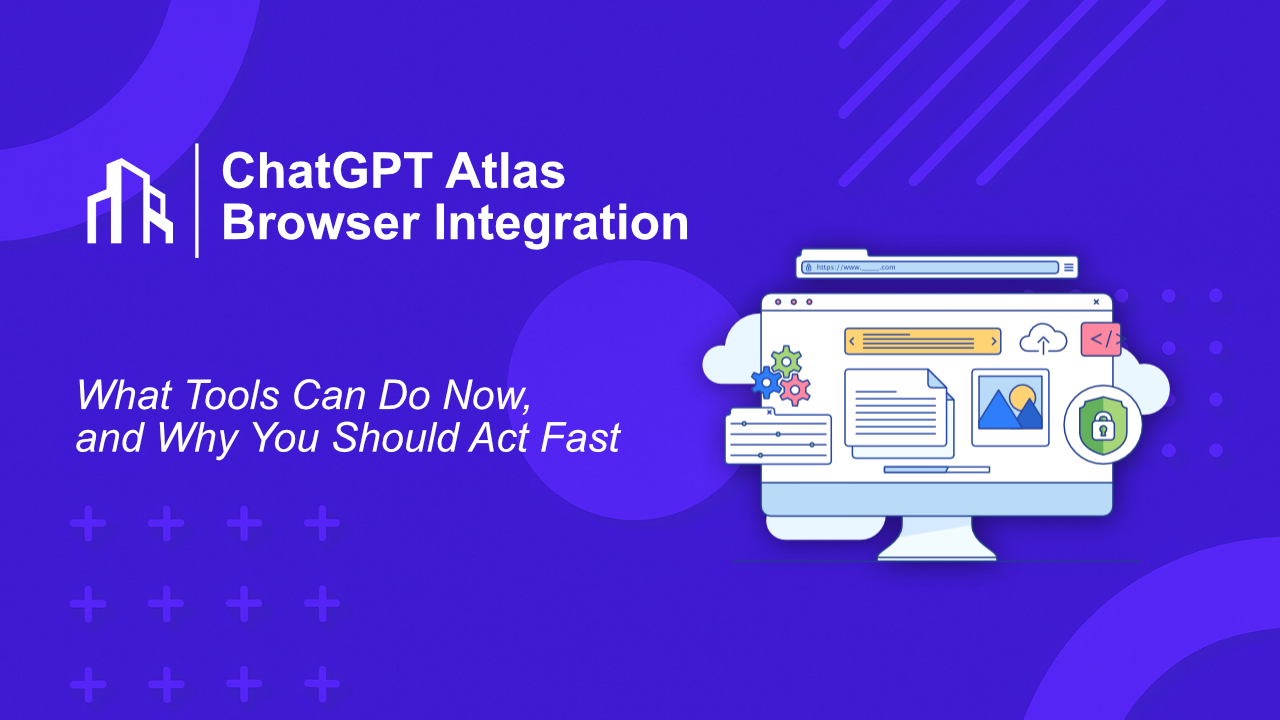ChatGPT Atlas Browser Integration: What Tools Can Do Now, and Why You Should Act Fast

OpenAI’s ChatGPT Atlas marks the start of the AI browser era, a shift from web browsing to intelligent context-driven workflows. Atlas introduces browser memory, sidebar chat, and early signs of agentic automation that will redefine how users interact with the web.
For software founders, SaaS builders, and automation teams, this isn’t a time to observe. It’s the time to build and position your tool before the integration gates open.
What ChatGPT Atlas Brings
The official OpenAI product page highlights four key components that make Atlas a category shift rather than a browser update:
- Persistent Context Memory – Atlas remembers your searches, readings, and summaries across sessions, allowing continuity in research and automation.
- Sidebar Chat – Context-aware dialogue that stays beside the web content you’re viewing.
- Agent Mode – A preview of small autonomous workflows that can execute tasks directly within the browser.
- Cross-Platform Rollout – Atlas is currently available on macOS, with Windows, iOS, and Android scheduled next.
Atlas isn’t competing with Chrome. It’s replacing extensions with intelligence turning passive browsing into a live, AI-assisted workspace.
Integration Is Already Underway
While OpenAI hasn’t yet released a public SDK, several early signs indicate that integrations are already being tested. For example, Braze recently announced early Web SDK compatibility with Atlas the first signal that developers will soon be able to connect directly to the browser context.
That’s the opportunity window. Once OpenAI opens its extension or agent API, the tools already prepared will dominate visibility.
What Kinds of Tools Can Integrate First
Atlas is positioned as an execution environment for AI-native workflows. These categories will benefit first:
🔹 Airtable
Let users extract tables or data from pages and sync them directly to a workspace. Atlas could trigger “Add this to Airtable” commands automatically.
🔹 Notion
Turn passive notes into a live “context brain.” Meeting notes and research could automatically link to the web pages being viewed, powered by Atlas’s memory layer.
🔹 Make.com and n8n
Automations can trigger directly from user context:
“When I open this product page, summarize key specs and send them to CRM.”
Atlas + automation = real contextual workflows.
🔹 RunPod
AI developers could use Atlas as a control dashboard for GPU-powered deployments. A single prompt in the sidebar could launch or terminate pods.
🔹 HubSpot or Pipedrive
Sales and CRM data could connect in real time. Imagine asking Atlas:
“Find similar leads to this company.”
and receiving instant insights within the same tab.
🔹 Bright Data
As Atlas prioritizes verified information, data collection tools can supply real-time, structured sources for cleaner AI responses.
Why Early Integration Matters
The first wave of tools to appear inside ChatGPT’s plugin store exploded in visibility. Atlas will multiply that effect it’s built directly into how users browse, search, and act.
Early integration means:
- You’ll be discoverable through Atlas’s sidebar ecosystem.
- Your tool will benefit from native visibility without ads or search optimization.
- You’ll become part of the user’s default workflow before the market floods.
This is AI-era distribution: whoever integrates first becomes embedded in the user experience itself. Waiting means competing for attention after the landscape is already saturated.
How Integration Will Likely Work
OpenAI will likely expose an extension or agent SDK, allowing tools to:
- Register capabilities (“actions”) available to Atlas.
- Authenticate securely through the OpenAI ecosystem.
- Interact with the browser’s context memory and sidebar interface.
- Surface recommendations and automations contextually within web sessions.
Until the SDK is released, companies can prepare by:
- Structuring their APIs for context-based triggers.
- Designing “light” companion agents that run locally or via webhooks.
- Planning onboarding flows aligned with OpenAI’s authentication model.
These steps can be developed today ahead of the official release.
Why This Matters for Developers and Businesses
Atlas represents a merging of AI + web operations. Instead of building apps users need to open, your tool can live inside the browsing process. This changes the economics of SaaS from marketing for clicks, to embedding your product in user workflows by default.
Whether you run a CRM, a writing platform, an automation tool, or an analytics service, being Atlas-ready means:
- Instant context awareness.
- Zero friction access.
- Long-term visibility baked into the browsing layer.
What Scalevise Can Do for You
Scalevise helps companies transition from standalone tools to integrated AI experiences.
We support startups, scale-ups, SaaS teams, and automation platforms through:
- Integration Readiness Audits – evaluate your API structure, auth model, and fit for Atlas.
- Prototype Development – design and test early browser-based workflows.
- Automation & Middleware Setup – bridge your stack with Atlas via Make.com, n8n, or custom middleware.
- Launch Positioning – plan visibility and onboarding for when Atlas integrations open publicly.
🚀 Scalevise: Your End-to-End Atlas Integration Partner
We don’t just advise we build.
Scalevise manages the entire process from registration and SDK alignment to full integration, testing, and deployment.
We make sure your tool isn’t just compatible with Atlas but optimized for discoverability, reliability, and compliance.
Our technical architects and automation experts design real, ready-to-launch integrations that will place your product inside the AI browser ecosystem not after it’s crowded, but right when it matters.
Add your tool now to get noticed later.
Once public registration opens, the top-performing integrations will already be established.
Next Steps
If you’re building:
- a SaaS product
- an AI or automation tool
- a data or research platform
- or any browser-connected workflow
Now is the time to prepare.
Contact Scalevise today to align, build, and launch your Atlas integration before the public SDK release.
